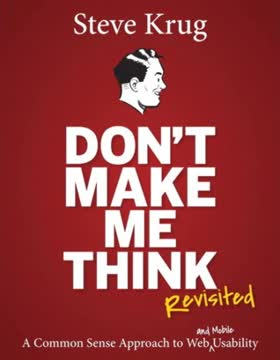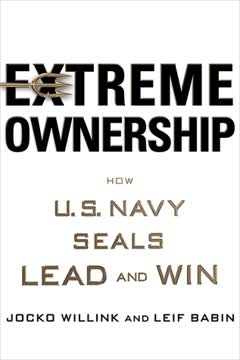Key Takeaways
1. Brand equity is a set of assets that add value to a product or service
Brand equity is a set of assets (and liabilities) linked to a brand's name and symbol that adds to (or subtracts from) the value provided by a product or service to a firm and/or that firm's customers.
Brand awareness is the strength of a brand's presence in consumers' minds. It ranges from recognition to recall to top-of-mind awareness. High awareness can lead to familiarity and liking, which can influence purchase decisions.
Perceived quality is a key dimension of brand equity. It drives financial performance, often serves as a strategic thrust for businesses, and is linked to other brand perception aspects. Perceived quality can differentiate a brand and justify premium pricing.
Brand loyalty is a core dimension of brand equity. It provides:
- Predictable sales and profit stream
- Reduced marketing costs
- Barrier to competitor entry
- Time to respond to competitive threats
2. A strong brand identity is crucial for building and maintaining brand equity
A brand identity is a unique set of brand associations that the brand strategist aspires to create or maintain. These associations represent what the brand stands for and imply a promise to customers from the organization members.
Brand identity structure includes:
- Core identity: The central, timeless essence of the brand
- Extended identity: Elements that provide texture and completeness
- Value proposition: Functional, emotional, and self-expressive benefits
Avoiding identity traps is essential:
- Brand image trap: Letting customers dictate the brand
- Brand position trap: Focusing only on advertising taglines
- External perspective trap: Ignoring internal brand-building
- Product-attribute fixation trap: Neglecting other brand dimensions
3. Organizational associations can provide a sustainable competitive advantage
An organization is usually more enduring, complex, and permanent than a particular product line. A perception of an organization is therefore more difficult for competitors to combat than specific brand attributes, which can be easily surpassed.
Types of organizational associations:
- Society/community orientation
- Perceived quality
- Innovation
- Customer focus
- Presence and success
- Local vs. global orientation
Benefits of organizational associations:
- Differentiation in crowded markets
- Credibility for product claims
- Emotional connection with customers
- Basis for brand extensions
4. Brand personality helps create emotional connections with customers
Brand personality can be defined as the set of human characteristics associated with a given brand.
The Big Five brand personality dimensions:
- Sincerity (down-to-earth, honest, wholesome, cheerful)
- Excitement (daring, spirited, imaginative, up-to-date)
- Competence (reliable, intelligent, successful)
- Sophistication (upper class, charming)
- Ruggedness (outdoorsy, tough)
Benefits of brand personality:
- Vehicle for customer self-expression
- Basis for customer-brand relationships
- Representation of functional benefits
5. Consistency in brand identity over time is key to building strong brands
There is no doubt that the goal should be to create an effective identity whose position and execution will endure and not become obsolete and/or tired.
Benefits of consistency:
- Ownership of a position in consumers' minds
- Ownership of identity symbols
- Cost efficiencies in marketing
Challenges to maintaining consistency:
- Pressure to compete on price
- Proliferation of competitors
- Fragmentation of media and markets
- Temptation to change a sound strategy
- Pressure for short-term results
6. Leveraging brand equity through extensions can create new growth opportunities
One recipe for strategic success is to create and leverage assets. With its awareness, perceived quality, associations and customer loyalty, a brand is usually the most powerful asset that a firm owns.
Types of brand leveraging:
- Line extensions: New versions within the same product class
- Vertical extensions: Moving up or down in price/quality
- Brand extensions: Entering new product categories
- Co-branding: Partnering with other brands
Considerations for brand extensions:
- Fit with brand identity
- Ability to provide a competitive advantage
- Potential to enhance or dilute brand equity
- Opportunity cost of not developing a new brand
7. Measuring brand equity across products and markets provides valuable insights
Good management starts with good measurement, and the key to managing a portfolio is a common set of measures.
The Brand Equity Ten:
- Price premium
- Satisfaction/Loyalty
- Perceived Quality
- Leadership/Popularity
- Perceived Value
- Brand Personality
- Organizational Associations
- Brand Awareness
- Market Share
- Price and Distribution Indices
Benefits of cross-category measurement:
- Benchmarking against the best
- Insights into brand-building strategies
- Tools to manage brand portfolios
- Balance short-term financial measures with long-term brand asset measures
Last updated:
FAQ
What's Building Strong Brands about?
- Focus on Brand Management: Building Strong Brands by David A. Aaker delves into the strategic importance of brand management, emphasizing how brands can be developed and maintained as valuable assets.
- Key Themes: The book covers five major themes, including brand identity development, managing brand systems, and measuring brand equity, using case studies like Kodak and Saturn for illustration.
- Practical Guidance: Aaker offers practical advice for brand managers on creating strong brand identities, leveraging brand equity, and navigating competitive challenges.
Why should I read Building Strong Brands?
- Expert Insights: Authored by David A. Aaker, a leading authority in brand management, the book provides insights from his extensive research and experience.
- Comprehensive Frameworks: It offers frameworks for understanding brand equity and identity, applicable across various industries and markets.
- Real-World Applications: Through numerous case studies, the book illustrates successful brand strategies, helping readers understand real-world implications.
What are the key takeaways of Building Strong Brands?
- Brand Equity Definition: Aaker defines brand equity as assets and liabilities linked to a brand’s name and symbol, affecting the value of a product or service.
- Importance of Brand Identity: A strong brand identity is crucial for differentiation, with a system that includes core and extended identities shaping customer perceptions.
- Managing Brand Systems: Understanding the roles of various brands within a portfolio can lead to synergies and enhance overall brand equity.
How does David A. Aaker define brand identity in Building Strong Brands?
- Unique Set of Associations: Brand identity is a unique set of brand associations that the brand strategist aims to create or maintain, representing what the brand stands for.
- Core and Extended Identity: It consists of a core identity, the timeless essence of the brand, and an extended identity with additional elements for texture and completeness.
- Four Perspectives: Aaker suggests viewing brand identity through four perspectives: brand-as-product, brand-as-organization, brand-as-person, and brand-as-symbol.
How does Aaker define brand equity in Building Strong Brands?
- Assets and Liabilities: Brand equity is defined as a set of assets and liabilities linked to a brand’s name and symbol, impacting the value of a product or service.
- Four Major Asset Categories: These include brand awareness, brand loyalty, perceived quality, and brand associations, each contributing to the brand's overall value.
- Value for Customers and Firms: Brand equity influences customer perceptions and purchasing decisions, creating value for both firms and customers.
What is the "Brand Equity Ten" in Building Strong Brands?
- Comprehensive Measurement Framework: The "Brand Equity Ten" consists of ten measures assessing various aspects of brand equity, such as loyalty and perceived quality.
- Customer-Centric Approach: It focuses on customer perceptions and behaviors, providing insights into how brands are viewed in the marketplace.
- Guides Brand Strategy: These measures help track brand performance over time and inform strategic decisions related to brand positioning.
What is the brand identity system introduced in Building Strong Brands?
- Comprehensive Framework: Aaker introduces a structured approach to managing brand identity, encompassing core and extended identities.
- Four Perspectives: The system encourages viewing the brand from four perspectives: brand-as-product, brand-as-organization, brand-as-person, and brand-as-symbol.
- Value Proposition and Credibility: It aims to provide a clear value proposition to customers while establishing credibility, enhancing the brand-customer relationship.
How does Aaker suggest measuring brand equity over time in Building Strong Brands?
- Tracking Key Metrics: Aaker recommends using quantitative surveys and qualitative research to monitor brand perceptions and equity over time.
- Longitudinal Studies: Conducting longitudinal studies helps observe changes in equity and identify trends impacting market position.
- Adapting Strategies: Regular measurement enables brands to adapt strategies based on customer feedback and market dynamics.
What role does brand personality play in brand management according to Building Strong Brands?
- Definition of Brand Personality: Brand personality is the set of human characteristics associated with a brand, helping connect with customers emotionally.
- Creating Emotional Connections: A strong brand personality fosters emotional connections, enhancing loyalty and engagement.
- Guiding Brand Strategy: It informs communication strategies and helps differentiate the brand in a competitive landscape.
What are some examples of strong brand identities in Building Strong Brands?
- Kodak's Identity: Kodak embodies simplicity and family, with a commitment to quality, built on decades of marketing and innovation.
- Saturn's Unique Approach: Saturn emphasizes customer relationships and a no-haggle pricing strategy, creating a loyal customer base.
- The Body Shop's Values: The Body Shop focuses on social responsibility and environmental consciousness, enhancing brand equity and loyalty.
What are the challenges of building strong brands according to Building Strong Brands?
- Competitive Pressures: Intense price competition and competitor proliferation can dilute brand identity and complicate positioning.
- Market Fragmentation: Fragmented media and markets add complexity, making consistent messaging and brand recognition challenging.
- Internal Organizational Biases: Internal pressures, such as a focus on short-term results, can hinder brand-building efforts.
How can organizations ensure consistency in brand identity according to Building Strong Brands?
- Clear Brand Guidelines: Develop comprehensive guidelines outlining core identity, messaging, and visual elements for consistent communications.
- Regular Training and Communication: Invest in training employees and stakeholders to understand and embody the brand identity.
- Monitoring and Feedback: Implement systems to monitor communications and gather feedback, ensuring the brand remains true to its identity.
Review Summary
Building Strong Brands receives mixed reviews, with an average rating of 4 out of 5. Readers appreciate its comprehensive coverage of branding strategies and concepts, considering it essential for marketers and brand managers. Many find the book insightful and thorough, praising its frameworks and practical approach. However, some criticize the outdated examples, repetitive content, and technical writing style. While some readers struggle with the author's writing, others value the detailed analysis and consider it a must-read for understanding brand building, despite its flaws.
Similar Books










Download PDF
Download EPUB
.epub digital book format is ideal for reading ebooks on phones, tablets, and e-readers.





